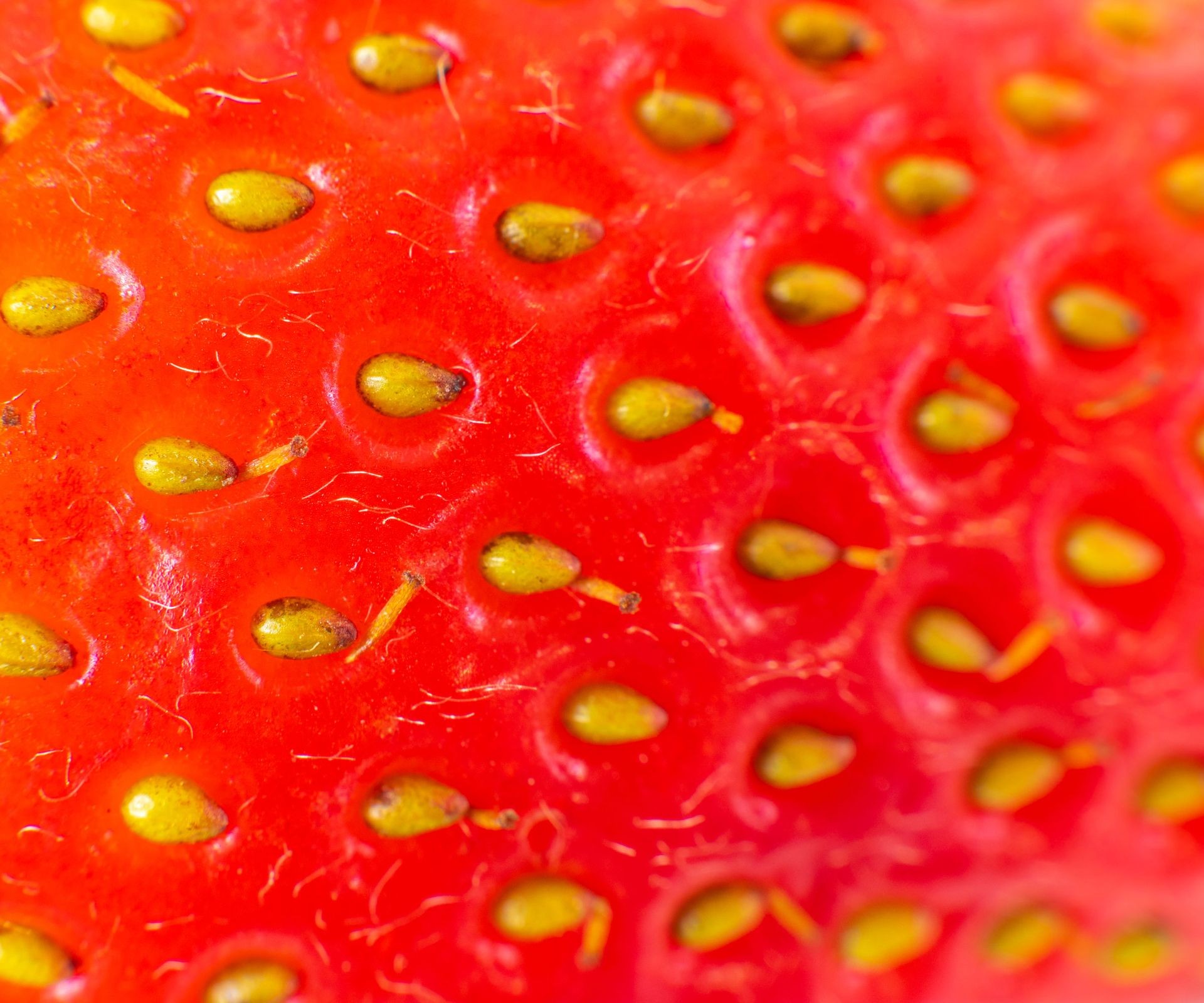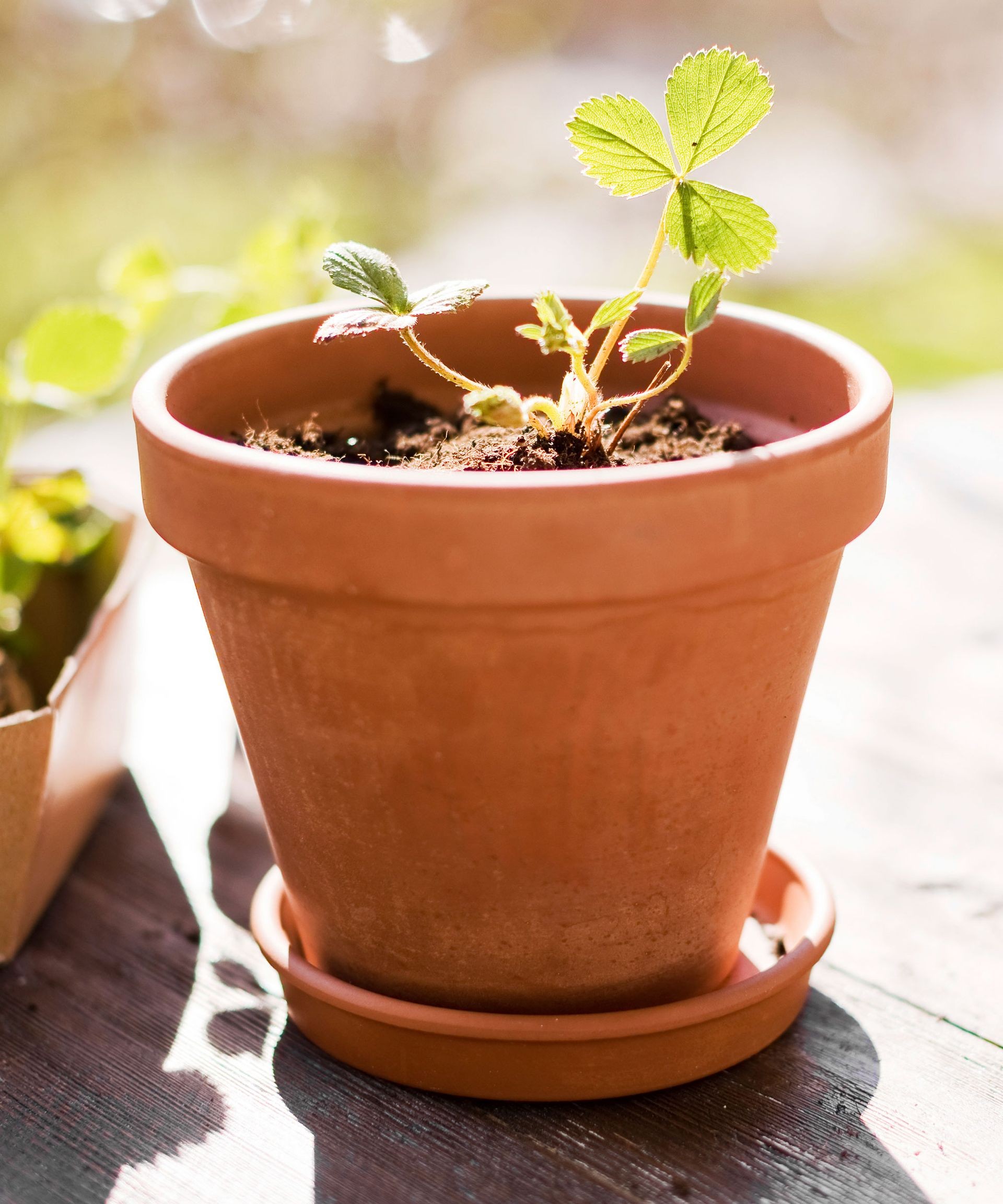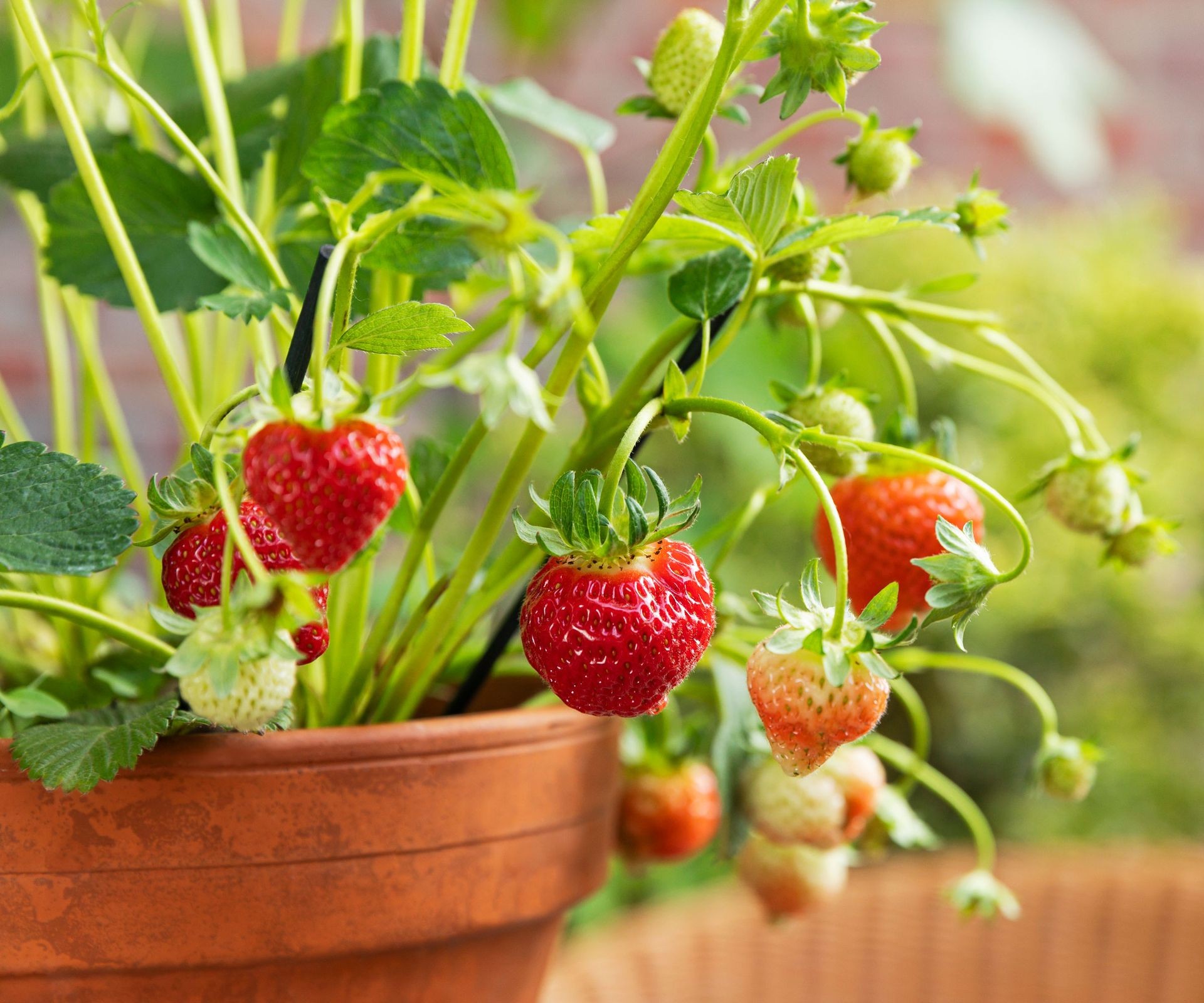No products in the cart.
NEWS
Growing Strawberries from a Strawberry: Unlocking the Potential in Every Seed
Strawberries are a universal delight – sweet, portable, and incredibly versatile. As a gardener and agriculturist, I’ve always been fascinated by how these little powerhouses reproduce. Many aspiring home growers pick up a perfect berry and wonder, “Can I actually grow a new strawberry plant from this strawberry?” The answer is a bit nuanced, involving specific parts of the fruit, but it’s absolutely possible and a rewarding process! Here at Biogarden.asia, we love guiding you through the fascinating world of plant propagation.
When you think about growing a strawberry from a strawberry, you might initially imagine planting a piece of the fruit itself. However, the viable part for starting a new plant isn’t the juicy flesh or the leafy top. It’s the tiny “seeds” embedded on the outside of the berry. Understanding this is the first step to successful propagation directly from the fruit. While there are easier ways to get new strawberry plants, like using runners, growing from the seeds of a favorite berry allows you to potentially reproduce a plant with the exact characteristics you love.
Understanding How Strawberries Propagate: Seeds vs. Runners
It’s important to distinguish between the two primary ways strawberry plants reproduce: runners and seeds.
Runners: The Easy Way
Strawberry plants are prolific producers of “runners” – horizontal stems that grow out from the main plant. These runners develop small plantlets along their length. If a runner touches the soil, the plantlet can root and grow into a new, independent plant identical to the parent. If you have access to an established strawberry plant, taking a rooted runner is by far the quickest and easiest method to get a new plant.
The Seed Challenge: What You Need to Know
Growing from the seeds on the fruit, while more involved than runners, is the method you use when you want to propagate directly from a strawberry you’ve eaten. Each tiny speck on the surface of a strawberry is technically an achene, and within each achene is a single seed. These seeds are the key to growing a new plant from the fruit itself.
Why Seeds (Not Tops) Work
A common misconception is trying to plant the leafy top of a strawberry. Unfortunately, the top is simply foliage and a bit of stem tissue; it doesn’t contain the necessary structures to regenerate a whole new plant with roots. Trying to grow a strawberry from its top will likely result in disappointment. Focus on the seeds – nature’s true propagators in this case.
The Right Time to Start Your Strawberry Seeds
Timing is quite important when growing strawberries from seed to give your new plants the best start.
Timing for Indoors vs. Outdoors
The ideal time to sow strawberry seeds is typically in early spring. Starting seeds indoors, about 6-8 weeks before your last expected frost date, offers significant advantages. This controlled environment provides the consistent warmth and moisture young seedlings need to germinate successfully. Once the seedlings are strong and the danger of frost has passed, they can be transplanted outdoors. If you plan to sow seeds directly outdoors, wait until the soil has warmed up and there is no longer a risk of freezing temperatures.
Considering Your Climate Zone
Your specific climate zone will dictate the exact timing for sowing, whether indoors or out. Consult a local gardening calendar or extension office for typical last frost dates in your area to help plan your propagation efforts.
Step-by-Step Guide: Propagating Strawberries from Seed
Growing strawberries from seed requires a bit of patience and attention, but the process is straightforward. Here’s how to do it:
Selecting and Preparing Your Fruit
Choose ripe, healthy strawberries from plants you know produce good fruit. Avoid any berries that show signs of bruising, mold, or disease. You’ll likely need a few berries to get enough viable seeds. Slice the selected berries thinly (about 1/8 to 1/4 inch thick) and lay the slices out on a paper towel or screen.
Extracting and Drying the Seeds
Allow the strawberry slices to dry completely in a warm, well-ventilated spot away from direct sunlight. As they dry, the tiny achenes containing the seeds will become easier to handle and separate from the fruit pulp. Once fully dried (this can take a few days), gently rub the slices to dislodge the seeds. Collect the dried seeds in a small container.
The Essential Cold Treatment (Stratification)
Strawberry seeds require a period of cold to break dormancy and signal them that it’s time to germinate – this is called cold stratification. Place your collected, dried seeds in a small airtight container or a plastic bag with a tiny amount of slightly damp material like paper towel or sand (ensure it’s just damp, not wet, to prevent mold). Store this container in your refrigerator (not the freezer) for approximately three to four weeks. This chilling period mimics winter conditions and is crucial for successful germination.
Sowing Your Precious Seeds
After the stratification period, your seeds are ready to sow.
 Close-up view of tiny strawberry seeds visible on the surface of a red strawberry fruitPrepare small pots or seed trays filled with a high-quality, well-draining seed starting mix, ideally amended with a little compost. Because strawberry seeds are so small, scatter them lightly on the surface of the soil. Do not bury them deeply – a very light dusting of fine soil or vermiculite is sufficient, or simply press them gently onto the surface.
Close-up view of tiny strawberry seeds visible on the surface of a red strawberry fruitPrepare small pots or seed trays filled with a high-quality, well-draining seed starting mix, ideally amended with a little compost. Because strawberry seeds are so small, scatter them lightly on the surface of the soil. Do not bury them deeply – a very light dusting of fine soil or vermiculite is sufficient, or simply press them gently onto the surface.
The Advantage of Starting Indoors
Maintaining consistent moisture and warmth is critical for strawberry seed germination. This is where starting seeds indoors really shines. Place your pots or trays in a warm location (around 65-75°F or 18-24°C) and use a humidity dome or plastic wrap to help retain moisture. Keep the soil consistently moist but not waterlogged. Germination can be slow and erratic, potentially taking anywhere from one week to six weeks. Be patient! Once seedlings appear, remove the humidity dome and provide plenty of light, either from a sunny windowsill or grow lights.
Nurturing Your Young Strawberry Plants: Essential Care Tips
Once your seeds have germinated and developed into small seedlings, it’s time to focus on helping them grow into strong, productive plants.
Sun, Water, and Feeding
Strawberry plants thrive in full sun, meaning at least 6-8 hours of direct sunlight per day. This is crucial for developing healthy leaves and producing abundant fruit.
 Young strawberry plant with green leaves growing in a terracotta potProper watering is equally important. Strawberry plants prefer consistently moist soil. Aim for about one inch (2.5 cm) of water per week, adjusting based on rainfall and temperature. Container-grown strawberries will likely need more frequent watering than those in the ground, as pots dry out faster. When it comes to nutrients, enriching the soil with compost before planting provides a good foundation. During the growing season, a balanced, all-purpose fertilizer can give your plants an extra boost.
Young strawberry plant with green leaves growing in a terracotta potProper watering is equally important. Strawberry plants prefer consistently moist soil. Aim for about one inch (2.5 cm) of water per week, adjusting based on rainfall and temperature. Container-grown strawberries will likely need more frequent watering than those in the ground, as pots dry out faster. When it comes to nutrients, enriching the soil with compost before planting provides a good foundation. During the growing season, a balanced, all-purpose fertilizer can give your plants an extra boost.
Pruning for Better Yield
A key tip for encouraging robust plants and a better harvest in subsequent years is to pinch off the first few flowers that appear early in the plant’s life, especially in the first year if you started from seed. While this might feel counterintuitive, it directs the plant’s energy towards developing a strong root system and more foliage, which will pay off with more fruit later. As plants mature, manage runners by either letting them root to create new plants or trimming them off to keep the energy focused on fruit production and maintain plant containment.
Pot vs. Ground: Where to Grow?
You can certainly grow strawberries in containers, which is great for small spaces or controlling soil conditions. However, plants grown directly in the ground often have more space to develop extensive root systems, potentially leading to stronger growth and larger yields over time. If growing in pots, ensure they have good drainage and are large enough to accommodate the plant’s growth. For maximum fruiting, place potted plants in a warm, sunny outdoor location during the growing season.
Harvesting Your Delicious Strawberry Crop
The most exciting part! Knowing when to pick your strawberries ensures you get the sweetest, juiciest fruit.
Knowing When Your Berries are Ripe
Ripe strawberries are typically fully colored (usually red, depending on the variety) and plump. Check your plants regularly as berries can ripen quickly. Don’t wait too long once they are ripe!
Protecting Your Hard-Earned Harvest
Birds and other garden critters also love ripe strawberries. To protect your crop, consider covering your plants with fine netting as the fruit begins to ripen. This is a simple yet effective way to ensure you get to enjoy the berries you’ve worked hard to grow.
 Terracotta pot filled with a strawberry plant bearing ripe red strawberries ready for harvest
Terracotta pot filled with a strawberry plant bearing ripe red strawberries ready for harvest
Frequently Asked Questions About Strawberry Seed Propagation
Growing from seed can bring up a few common questions. Here are some answers based on our experience:
How long does it take to grow from a strawberry seed?
The timeline varies. Germination can take anywhere from 1 to 6 weeks. Once germinated, it can take several months for seedlings to mature into plants. Fruit production often begins in the plant’s second year, though some everbearing varieties might produce a small crop in their first year if started early indoors. Patience is key with seed-grown strawberries!
Which Strawberry Varieties Can You Grow From?
You can technically collect seeds from any strawberry variety. The primary distinction is between everbearing and June-bearing types. June-bearers produce one large crop in late spring/early summer. Everbearers produce smaller crops throughout the season. Some popular and reliable varieties include ‘Earliglow’ (June-bearer), ‘Albion’ (everbearing), and ‘Seascape’ (everbearing). Growing from the seed of a specific berry should result in a plant true to that variety.
Can you grow a strawberry plant by simply burying a whole strawberry?
While it might seem intuitive, simply burying a whole strawberry is unlikely to yield results. The seeds would be too deep in the soil and also surrounded by decaying fruit pulp, which can lead to rot and fungal issues. An animal would also likely dig it up before any seeds had a chance to sprout. Extracting and properly sowing the seeds after stratification is the recommended method. As our gardening expert, Dr. Emily Carter at Biogarden.asia, often says, “Giving seeds the right start – the right depth, moisture, and temperature – is critical for unlocking their potential, far more effective than just tossing a fruit into the soil.”
Embark on Your Strawberry Seed Journey with Biogarden.asia
Growing strawberries from the tiny seeds of a favorite berry is a rewarding project that connects you deeply with the plant’s life cycle. While it requires a bit more effort than planting runners, nurturing a strawberry from seed to fruit is incredibly satisfying. By following these steps – selecting the right fruit, carefully extracting and stratifying the seeds, providing the proper sowing conditions, and offering consistent care – you can enjoy the sweet taste of success, grown right from a single strawberry. Explore the gardening resources and supplies available at Biogarden.asia to support your propagation efforts and cultivate your own patch of berry goodness!



